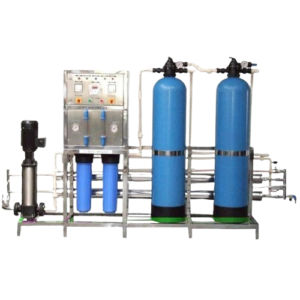Domestic Ro Plant
Original price was: ₨ 50,000.₨ 35,000Current price is: ₨ 35,000.
Installing a Domestic RO Plant at home provides numerous benefits, including improved taste and odor of water, reduction of health risks associated with waterborne contaminants. These systems are tailored for residential use, coming in various capacities to suit different household sizes and water consumption needs.
Description
A Guide to Domestic Ro Plants for Your Home
Introduction:
In this section, begin by capturing the reader’s attention with a brief introduction to the importance of clean and safe drinking water at home. Discuss the potential health risks associated with common water contaminants, setting the stage for why a domestic RO plant is a valuable solution. Establish a connection with the reader by highlighting the relevance of the topic to their daily lives.

Section 1: Understanding Domestic RO Plants
What is a Domestic RO Plant?
Define a domestic RO plant in simple terms, emphasizing its purpose of purifying water for domestic use.
Use analogies or metaphors to make the concept more accessible to readers who might not be familiar with water purification technologies.
How Does it Work?
Break down the reverse osmosis process step by step, explaining how water passes through a semipermeable membrane to remove impurities.
Use easy-to-understand language, and consider incorporating visuals like diagrams or simple illustrations to aid comprehension.
Section 2: Why Choose a Domestic RO Plant?
Benefits for Health
Elaborate on the health benefits of consuming purified water, such as reducing the risk of waterborne diseases and promoting overall well-being.
Share relevant research findings or statistics to reinforce the importance of clean water for health.
Taste and Odor Improvement
Discuss how RO systems enhance the taste and odor of water by eliminating elements like chlorine or sulfur.
Share anecdotes or examples to make the improvement in taste and odor relatable to the reader’s everyday experiences.
Section 3: Selecting the Right Domestic RO Plant
Consider Your Water Quality
Advise readers to test their water to identify specific contaminants and understand their potential sources.
Provide a list of common contaminants, explaining their origins and potential health effects.
Capacity and Usage
Guide readers in selecting an RO plant with the right capacity based on household size and water consumption patterns.
Offer practical tips, such as considering the number of family members and daily water usage habits.
Ease of Maintenance
Stress the importance of regular maintenance for optimal system performance.
Recommend systems with user-friendly maintenance requirements, and provide a basic maintenance checklist.
Section 4: Installation and Maintenance Tips
DIY Installation vs. Professional Installation
Explain the pros and cons of DIY installation versus hiring professionals.
Offer guidance on when it might be suitable for readers to handle the installation themselves and when professional assistance is recommended.
Regular Maintenance Routine
Provide a detailed maintenance routine, including tasks such as filter replacements and system cleaning.
Emphasize the simplicity of the maintenance process to encourage readers to stay consistent with upkeep.
Section 5: Cost Considerations
Upfront Costs vs. Long-Term Savings
Break down the initial investment required for a domestic RO plant compared to potential long-term savings on bottled water and potential health-related expenses.
Discuss the value proposition of investing in a quality RO system.
Energy Efficiency
Highlight energy-efficient models and explain how they can contribute to reducing electricity costs over time.
Consider providing estimates or examples to demonstrate potential energy savings.
Section 6: Real User Experiences
Customer Reviews and Testimonials
Incorporate real-life stories or testimonials from homeowners who have installed domestic RO plants.
Include a mix of positive experiences and constructive feedback to provide a balanced view.
Conclusion:
In the conclusion, summarize the key points discussed in the blog post, reiterating the importance of having a reliable domestic RO plant for clean and safe drinking water. Conclude with a strong and engaging statement to leave a lasting impression on the reader







Reviews
There are no reviews yet.